- Author: Kathy Keatley Garvey
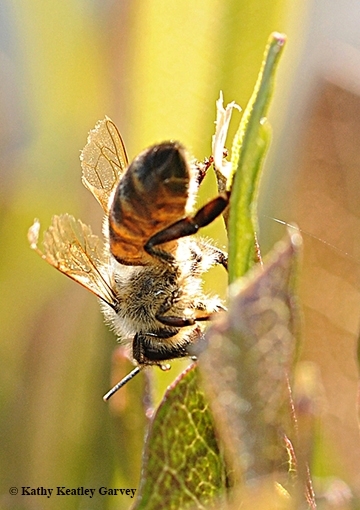
Martin Beye, a professor at the University of Düsseldorf, Germany and a former postdoctoral fellow in Page's lab at UC Davis, served as the lead author of the research, “Improving Genetic Transformation Rates in Honeybees,” published in Scientific Reports in the journal Nature.
The work was accomplished in Beye's lab in Germany and the Page labs.
“The significance of this paper lies in the ability to modify the chromosomes of honey bees and study the effects of individual genes,” said Page, former professor and chair of the UC Davis entomology department before capping his academic career as the Arizona State University provost.
“The honey bee genome,” Page explained, “is composed of about 15,000 genes, each of which operates within a complex network of genes, doing its small, or large, share of work in building the bee, keeping its internal functions operating, or helping it function and behave in its environment. The ability to transform, change, genes, or add or delete genes from chromosomes of bees, has been exceptionally challenging and the effort spans decades. Martin tackles problems such as this. He takes on the most challenging genetic problems and solves them.”
Beye was the first to map the major sex-determining gene for honey bees, considered one of the most important papers ever published on honey bee genetics. He “then moved on and developed a way to implement gene editing, being able to alter single genes within the genome,” Page related. “Now he has developed a method to introduce new genetic material into the honey bee.”
In their abstract, the six-member team wrote that “Functional genetic studies in honeybees have been limited by transformation tools that lead to a high rate of transposon integration into the germline of the queens. A high transformation rate is required to reduce screening efforts because each treated queen needs to be maintained in a separate honeybee colony. Here, we report on further improvement of the transformation rate in honeybees by using a combination of different procedures.”
Specifically, the geneticists employed a hyperactive transposase protein (hyPBaseapis), tripling the amount of injected transposase mRNAs. They injected embryos into the first third (anterior part) of the embryo. These three improvements together doubled the transformation rate from 19 percent to 44 percent.
“We propose that the hyperactive transposase (hyPBaseapis) and the other steps used may also help to improve the transformation rates in other species in which screening and crossing procedures are laborious,” they wrote in their abstract.
For their research, the scientists chose feral Carniolan or carnica colonies. Carniolans, a darker bee, are a subspecies of the Western honey bee, Apis mellifera.
Beye joined the Page lab in 1999 as the recipient of a Feodor Lynen Research Fellowship, an award given to the brightest young German Ph.Ds to provide an opportunity for them to work in the laboratories of U.S. recipients of the Alexander von Humboldt Research Prize. Page, who won the Humboldt Prize in 1995, continues to focus his research on honey bee behavior and population genetics, particularly the evolution of complex social behavior.
Following his postdoctoral fellowship, Beye returned to the Page labs at UC Davis and ASU as a visiting scientist. (link to https://www.ucdavis.edu/news/honeybee-gene-find-ends-150-year-search ) Beye spoke at UC Davis this spring as part of his Humboldt-funded mini sabbatical, the guest of Page and hosted by the Department of Entomology and Nematology. During his visit, he and UC Davis bee scientist Brian Johnson developed collaborative projects that they will begin in the spring of 2019. “This is exactly what the Alexander von Humboldt foundation wants – to build and extend interactive networks of researchers,” Page commented.
Resources:
UC Davis Behind the Groundbreaking Discovery of Honey Bee Sex Determination
About Robert E. Page Jr., Recipient of UC Davis Alumni Award
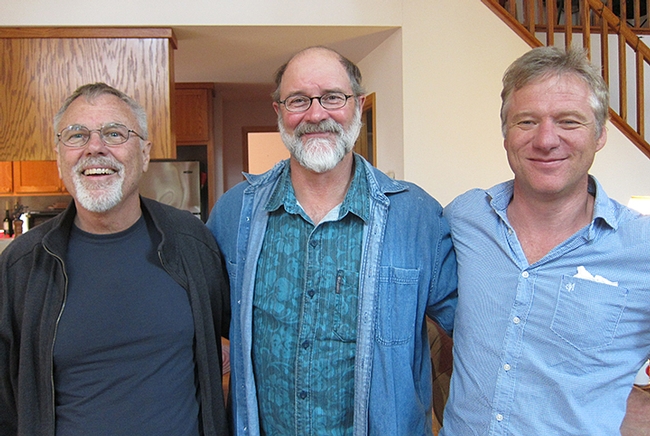
- Author: Kathy Keatley Garvey
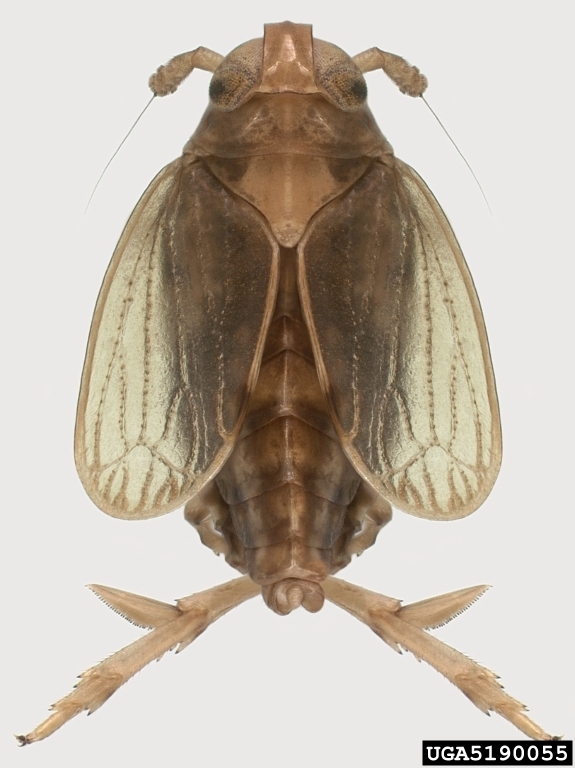
First-of-its-kind research, published in Scientific Reports of the journal Nature by a nine-member team, including UC Davis agricultural entomologist Christian Nansen, indicated that attracting alternative hosts to parasitoids of rice insect pests, can help protect a rice crop. The players: a grass species, a planthopper, and an egg parasitoid.
The field and laboratory work, done in China, targeted the brown planthopper, Nilaparvata lugens, or BPH, the economically most important rice pest in Asia. Results showed that BPH densities were “significantly lower in the rice fields with the banker plant system compared to control rice fields without banker plant system,” the scientists said.
“Many people are familiar with the concept of a ‘trap crop'-- a sacrificial crop which is planted mixed in with or adjacent to an economically important crop and the trap crop serves to manipulate pests away by offering them a more attractive/suitable host alternative,” said Nansen, an assistant professor with the UC Davis Department of Entomology and Nematology. “The use of banker plants in pest management is similar to the use of trap crops, but banker plants typically have multiple ecological functions.”
The researchers planted a grass species, Leersia sayanuka, next to rice. It attracted a planthopper (Nilaparvata muiri), which does not infest rice.
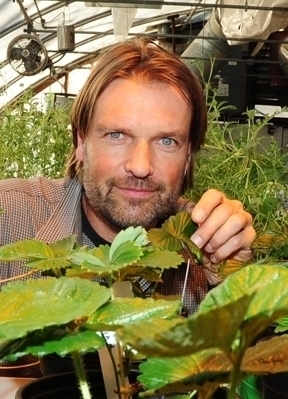
Rice is the stable food of more than 50 percent of the global population, and 60 percent of the Chinese population. However, scientists concur that the world's rice production needs to increase drastically over the next three decades to meet the growing food demand in Asia. Growing concern over BPH outbreaks and higher pesticide usage led to the sustainable pest management study.
Titled “Use of Banker Plant System for Sustainable Management of the Most Important Insect Pest in Rice Fields in China,” the research is unique in that it is the first published study describing the attraction of alternative hosts to parasitoids of rice insect pests. In rice systems, previously published research involved planting sesame as a nectar source to promote the establishment and persistence of a predatory bug; and studies involving parasitoids.
BPH, found only in southeast Asia and Australia, feeds on the rice crop at all stages of plant growth and can also transmit two viruses, rice ragged stunt virus, and rice grassy stunt virus. Damage can commonly result in a 60 percent yield loss. An infestation is often called “hopper burn,” referring to yellow patches that soon turn brown.
Although BPH is not found in the United States, this kind of study “may be an approach to consider in California in the future if insecticide resistance continues to impeded effective insect control,” Nansen said.
Noting the importance of the banker plant system, Nansen said that banker plants “involve promotion of plant diversity to enhance pest self-regulatory ecosystem functions, such as predation and competition, to reduce susceptibility of agricultural crops to native and invasive pests. Also, banker plants “may provide resources, such as shelter, pollen and nectar or alternative preys to improve the establishment and persistence of beneficial insect populations used to control a specific pest.”
The first successful banker plant system, developed in 1977, involved tomato as the banker plant, a parasitoid and a whitefly.
Nansen is affiliated with both UC Davis and the Zhejiang Sustainable Pest and Disease Control, Institute of Plant Protection and Microbiology, Zhejiang Academy of Agricultural Sciences, Hangzhou, China.
Co-authors of the research paper include lead author Zhongxian Lu and colleagues Xusong Zheng, Yanhui Lu, Junce Tian, Hongxing Xu, all of the Zhejiang Sustainable Pest and Disease Control; and Pingyang Zhu, Facheng Zhang and Guihua Chen of the Jinhua (China) Plant Protection Station.
The study was jointly supported by the National Key Research and Development Program of China, Zhejiang Key Research and Development Program, and the Special Fund for Agro-scientific Research in the Public Interest.
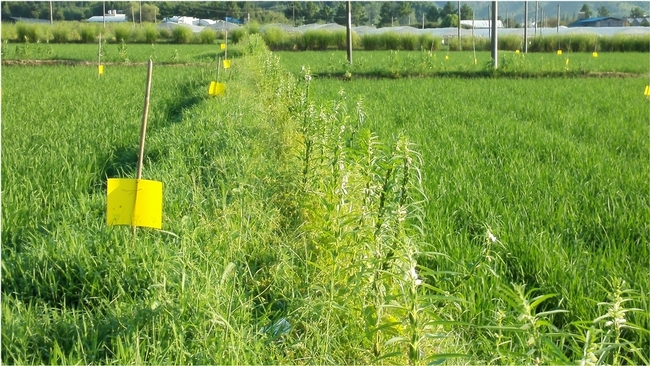
- Author: Kathy Keatley Garvey
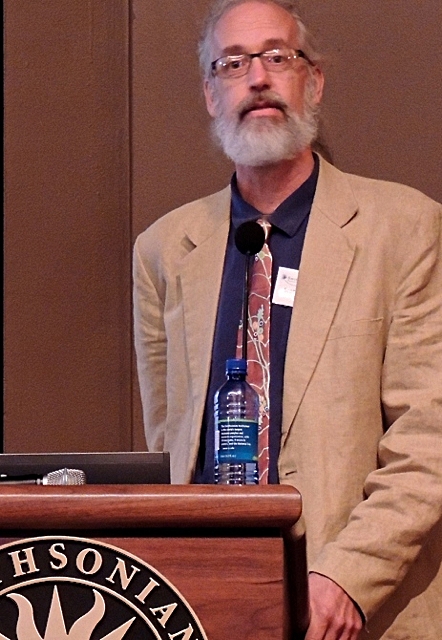
In a paper titled “Use Antimicrobials Wisely,” published in the current edition of Nature, a nine-member international research team, including Carroll, advocates that the United Nations reframe its action on antimicrobial resistance.
The United Nations is meeting in New York on Sept. 21 to discuss the global antimicrobial drug resistance (AMR) crisis.
“We're concerned about what will happen if the proposed UN solutions focus mainly on incentives for new drug development, at a time when the drug industry itself is abandoning those efforts against infectious disease due to AMR,” said Carroll, who co-leads the international group on resistance to pesticides and antimicrobial drugs. He founded and directs the Institute for Contemporary Evolution, Davis, and is a member of the Sharon Lawler lab, UC Davis Department of Entomology and Nematology.
The paper, published in the Comment section, is the first product from a two-year working group sponsored by the National Socio-Environmental Synthesis Center in Annapolis, Maryland. “We are taking a similar socio-environmental approach in our concurrent work on pesticide stewardship,” Carroll said.
“While new drugs have a role, we think it's more important for society to learn how to steward pathogen susceptibility, so we develop that theme in the paper,” Carroll said. “And because we also depend on microbes for digestion, immunity, and general health, and microbes support ecosystem functioning through nutrient cycles and the maintenance of soil and water quality, we further argue that our AM drug habits and waste streams threaten both personal and planetary health. “
Lead authors of the paper are Peter Jorgensen of Stockholm, Sweden, and Didier Wernli of Geneva Switzerland. Jørgensen, who spent part of his Danish graduate program working with Carroll in Davis, is now a postdoctoral researcher at the Royal Swedish Academy of Science, Stockholm.
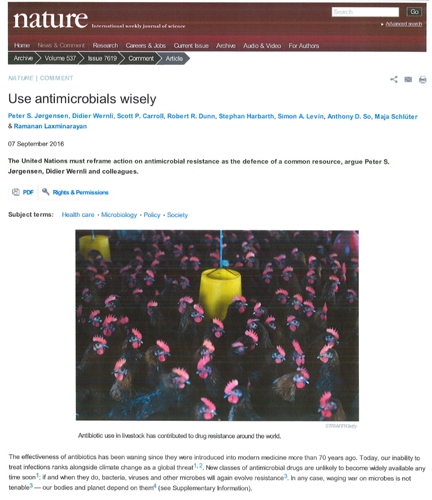
Carroll described AMR as more than a medical dilemma—it's a socio-ecological problem. “The vulnerability of pathogens to antimicrobial drugs is a communal resource, readily threatened by overuse, to be lost as a classic 'tragedy of the commons.' There is a lot of contemporary theory for social resilience in the face of socio-ecological challenges, and– linking to entomology– the early success of the pioneering management of Bt crop pest resistance evolution is an encouraging precedent.”
In its planetary health approach, the group seeks to be “more cognizant not only of preserving drug susceptibility in pathogenic microbes, but also protecting from wholesale destruction the community of microbes on which we depend for life,” Carroll said.
In the paper, the scientists pointed out that “Resistance affects animal and environmental health as well as human health, and so requires coordinated action across economic sectors. No single concern exemplifies this better than the high rate of antibiotic use in agriculture (largely as growth promoters or disease prevention).” They wrote that in the United States, 70 to 80 percent of all anti-microbials consumed are given to livestock.”


